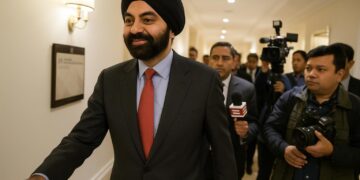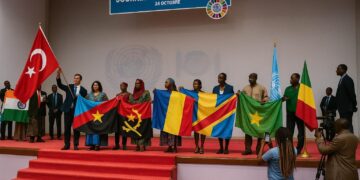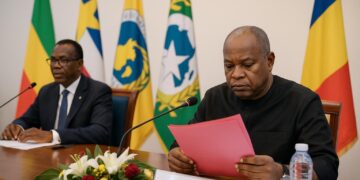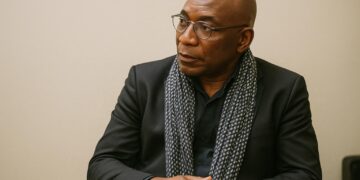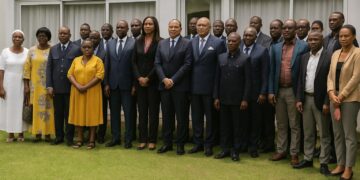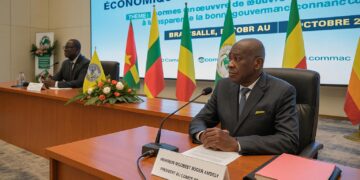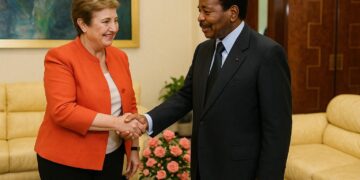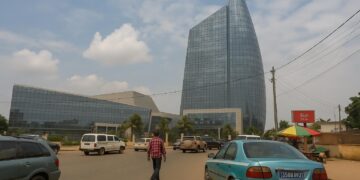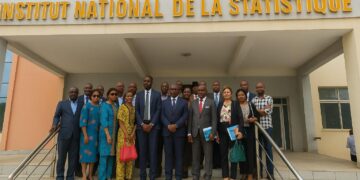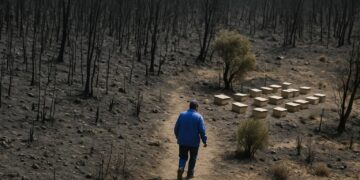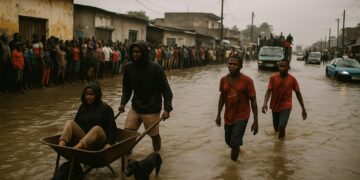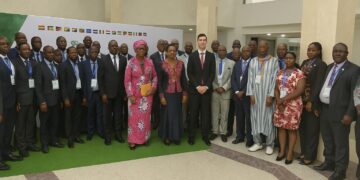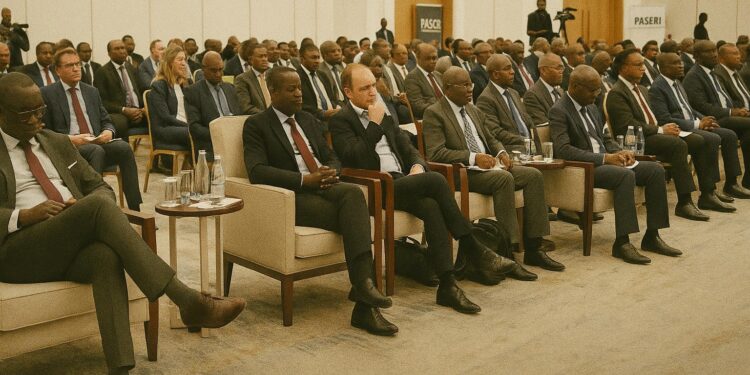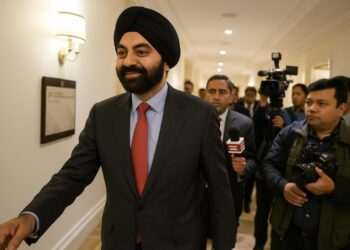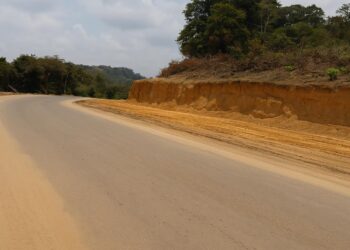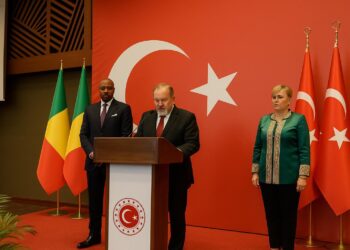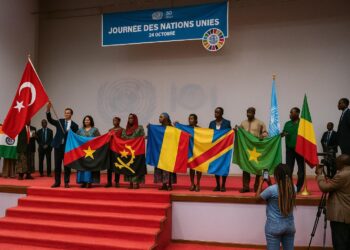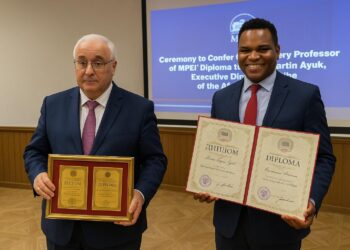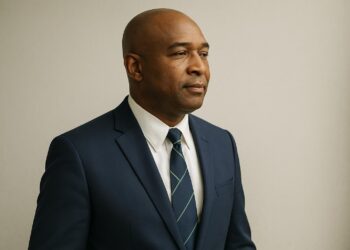Strategic Convergence of Brazzaville and Bretton Woods
The marbled lobby of Brazzaville’s Hilton provided an almost symbolic backdrop for a relationship that has matured from post-conflict reconstruction to infrastructural modernisation. In front of cabinet members, diplomats and industry specialists, Energy and Hydraulics Minister Emile Ouosso and World Bank energy chief Jie Tang gave Pasel—Project for the Improvement of Electricity Services—its official send-off. The mood blended ceremony with prudence, conscious that international capital and domestic expectations have converged within the same high-voltage circuit.
At USD 100 million, the credit accounts for roughly eleven percent of the Bank’s active Congolese portfolio (World Bank, 2025). Officials emphasise that the envelope is less an emergency infusion than a calibrated instrument designed to realign technical assets, corporate culture and regulatory incentives. In diplomatic parlance, Pasel is the pivot that allows Brazzaville to speak simultaneously to investors, ratings agencies and neighbourhood households switching on a light bulb without voltage dips.
Anatomy of a USD 100 Million Power Prescription
Pasel’s architecture follows a triptych that is by now standard in energy-sector reform but nonetheless ambitious in scale. First comes the fortification of backbone transmission through the rehabilitation of critical substations and the Pointe-Noire–Brazzaville 220-kV line, a stretch whose thermal overloads have long imposed expensive outages on both port logistics and inland manufacturing (African Development Bank, 2024). Second, distribution and retail operations will be modernised—an undertaking that demands as much software as hardware. Here the national utility, Énergie électrique du Congo (E²c), is expected to migrate from manual billing to digital metering while replacing ten thousand public luminaires with LED units in the country’s two economic poles.
The third component, less visible but arguably decisive, funds technical assistance. Consultants will refine tariff methodologies, procure new supervisory control systems and train engineers in loss-reduction protocols. For Minister Ouosso, these layers form “a single fabric in which governance threads are interwoven with copper wires,” an image that captures the systemic—not merely mechanical—nature of the challenge.
Reinforcing Transmission: From Kilometres to Kilovolts
On the sandy outskirts of Djiri, teams have begun refurbishing a high-tension substation that dates back to the late 1980s. Six new power transformers ordered under Pasel will raise conversion capacity by an estimated 180 MVA, enough to stabilise peak demand in a metropolitan area whose population has doubled in two decades (IEA, 2024). Engineers note that a single cascading fault in Djiri once propagated voltage depressions all the way to Pointe-Noire—an illustration of the network’s fragile topology.
By upgrading switchgear, installing real-time fault indicators and looping previously radial feeders, planners hope to introduce what Jie Tang calls “operational redundancy by design.” The phrase signifies more than technical jargon; it is an assurance to financiers contemplating future independent power projects, particularly in hydro corridors along the Kouilou and Sangha rivers.
Commercial Modernity and the Streetlight Test
Electricity in the capital is often discussed in kilowatt-hours, yet for many households the most visceral metric is street lighting. In Brazzaville’s Bacongo district, pilot LEDs installed during Pasel’s preparatory phase have reduced lamp-head energy consumption by roughly sixty percent while improving luminosity, according to data supplied by E²c’s technical directorate. The public-safety dividend is immediate, but the fiscal dividend—lower municipal electricity bills—may be even more persuasive for treasury officials.
Behind the lamps lies a wider attempt to overhaul commercial performance. E²c’s aggregate technical and commercial losses had reached an estimated thirty-eight percent in 2023 (Ministry of Energy, Republic of Congo, 2025). Smart meters and geocoded customer databases imported under the project aim to push that figure below twenty-five percent by 2028. Success would translate into annual savings that dwarf the interest service on the World Bank credit, a point quietly underscored by the Ministry of Finance during parliamentary debates.
Governance, Capacity and the Diplomacy of Megawatts
International donors inevitably scrutinise governance, yet Congolese authorities are eager to demonstrate domestic ownership. A national steering committee chaired by the Prime Minister convenes monthly, and tender evaluations include civil-society observers—a format that mirrors protocols applied in the successful Road Improvement Programme co-financed with the African Development Bank. Diplomatic missions in Brazzaville view the arrangement as an incremental but tangible advance in transparency.
Capacity-building, too, reaches beyond classroom theory. Young engineers seconded to Pasel will undertake rotations at regional power pools, including the Southern African Power Pool in Harare, thereby internalising cross-border operating standards that will be indispensable when Congo begins exporting surplus hydroelectricity after 2030.
Regional Ambitions and the “Mission 300” Nexus
The World Bank’s corporate slogan for sub-Saharan electrification—“Mission 300” to connect three hundred million Africans by 2030—functions as both rallying cry and yardstick. Pasel is Congo’s entry ticket to that continental endeavour. With an anticipated 1.75 million direct beneficiaries, the project is modest in continental terms yet decisive domestically, where only fifty-two percent of the population enjoyed formal grid access in 2022 (World Energy Outlook, 2023).
Whether Pasel ultimately catalyses the private hydro concessions envisioned in the national energy strategy will depend on macroeconomic stability as much as on transformer ratings. For now, officials in Brazzaville prefer to frame the project as a disciplined first step rather than a celebratory finale. As dusk settled over the Hilton’s glass façade, the metaphor felt apt: light is only as reliable as the grid behind the switch, and for Congo that grid has just embarked on a four-year journey of renewal.

